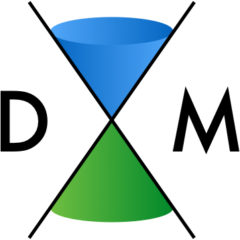
- This event has passed.
[Talk] Bastiaan J. Braams – Machine learning of equivariant functions inspired by atomistic modelling and three-dimensional image processing.
2019-12-10 @ 14:00 - 15:00
Title: Machine learning of equivariant functions inspired by atomistic modelling and three-dimensional image processing.
Speaker: Bastiaan J. Braams, Centrum Wiskunde & Informatica (CWI), Amsterdam, The Netherlands.
Abstract:
Over the past several years big data methods, including but not limited to use of deep convolutional neural networks, have been very successful in computer science applications and there is increasing effort to apply big data or machine learning methods to problems in physical science and engineering. Conversely we are seeing that problems from physical science are influencing machine learning research done in computer science environments. A very important application of big data methods in physical science where we see this mutual influence is the construction of effective interatomic potentials and force fields for atomistic modelling of molecular and condensed phase systems (e.g. [1]). This application shares features with certain applications in three-dimensional image processing in having data associated with point clouds and in seeking to represent functions that are invariant or covariant with respect to a permutation group (applied to the labelling of points in the cloud) and with respect to spatial groups of translations, rotations and inversion. Some by now almost classical big data approaches to the atomistic problem include use of Gaussian process approximation (kernel ridge regression) [2] and use of spherical wavelet expansions [3]. In addition deep neural networks are being applied (e.g. [4], [5]) and here we see the closest link to machine learning research with key words such as Point Cloud Convolutional Networks, Deep Sets, Spherical CNNs, Tensor Field Networks and Gauge Equivariant Neural Networks [6]. The presentation will provide a survey of these machine learning developments in the context of the application in physical science.
References:
[1] Ceriotti, Michele. “Atomistic machine learning between predictions and understanding.” arXiv preprint arXiv:1902.05158 (2019).
[2] Bartók, Albert P., and Gábor Csányi. “Gaussian approximation potentials: A brief tutorial introduction.” International Journal of Quantum Chemistry 115, no. 16 (2015): 1051-1057.
[3] Eickenberg, Michael, Georgios Exarchakis, Matthew Hirn, Stéphane Mallat, and Louis Thiry. “Solid harmonic wavelet scattering for predictions of molecule properties.” The Journal of chemical physics 148, no. 24 (2018): 241732.
[4] Schütt, Kristof T., Huziel E. Sauceda, P-J. Kindermans, Alexandre Tkatchenko, and K-R. Müller. “SchNet–A deep learning architecture for molecules and materials.” The Journal of Chemical Physics 148, no. 24 (2018): 241722.
[5] Zhang, Linfeng, Jiequn Han, Han Wang, Wissam Saidi, Roberto Car, and Weinan E. “End-to-end symmetry preserving inter-atomic potential energy model for finite and extended systems.” In Advances in Neural Information Processing Systems, pp. 4441-4451. 2018.
[6] Extensive further references to be provided in the presentation.
